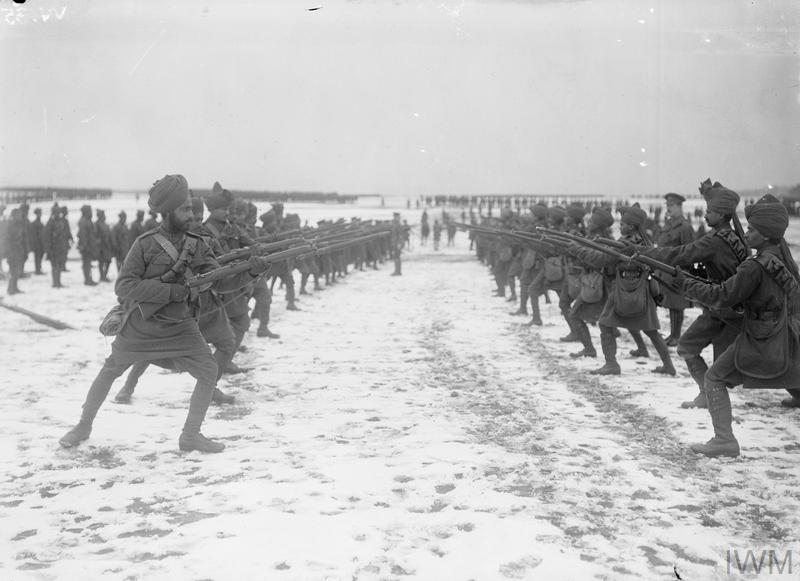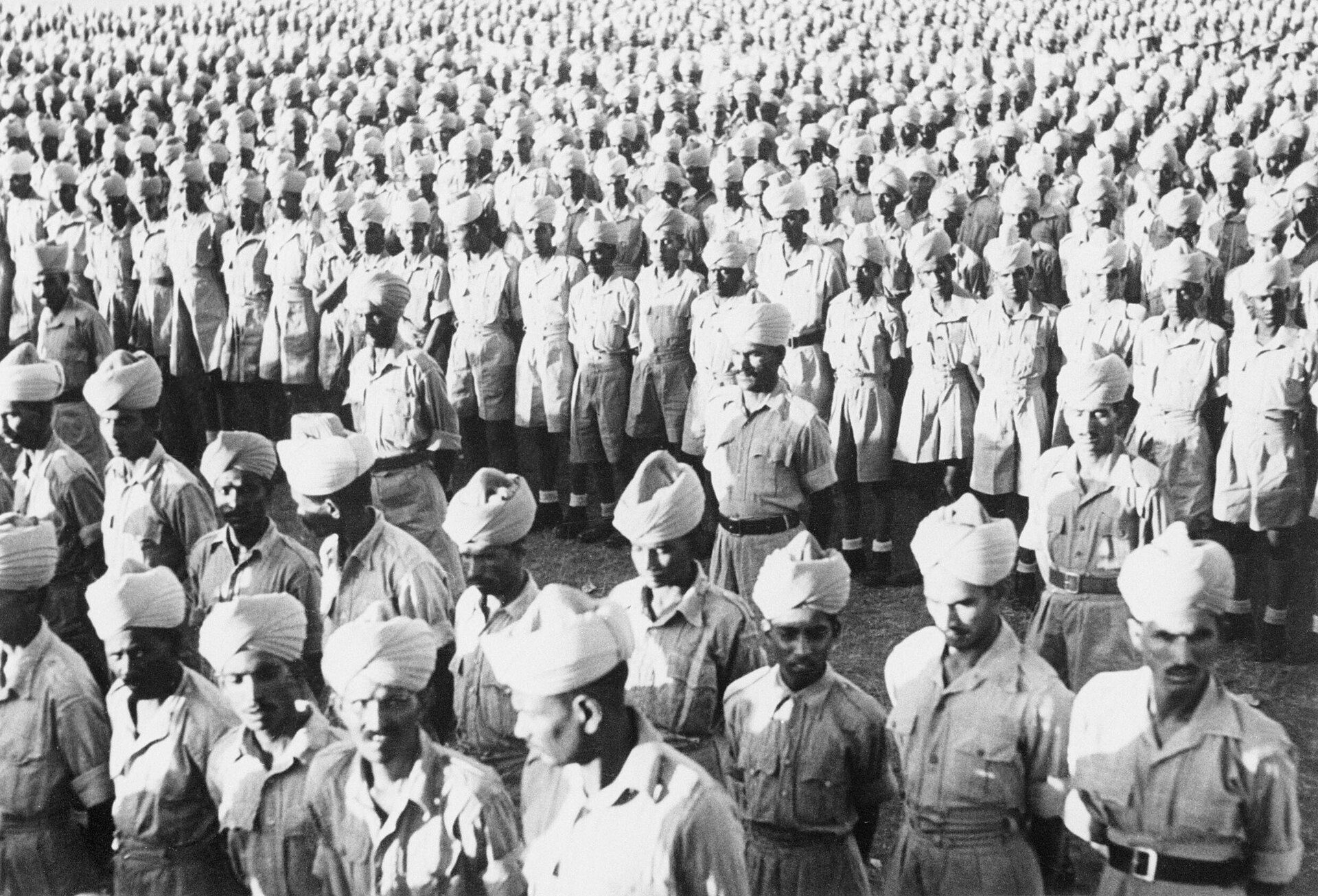Introduction
World War I, which lasted from 1914 to 1918, was a global conflict that involved many of the world's great powers and had significant repercussions across the globe. As part of the British Empire, India played a crucial role in supporting the British war effort. Over 1.3 million Indian soldiers and labour served in various Theatre of war, making substantial contributions to the Allied victory. This essay explores the composition, deployment, experiences, and impact of Indian soldiers during World War I. According to the Commonwealth War Graves Commission, 138,000 soldiers from India were sent to Europe during the First World War. Most of these soldiers were deployed in the Ypres Salient and at nearby Neuve Chapelle in France during the period 1914-15. A very large number lost their lives in the campaign to halt the German advance.
World War II (1939-1945) was a global conflict that involved most of the world's nations and had a profound impact on the course of history. India's role, as part of the British Empire, was pivotal in the Allied war effort. Over 2.5 million Indian sold iers served in various !heaters of war, making substantial contributions to Allied victories across Europe, Africa, and Asia. This essay explores the composition, deployment, experiences, and impact of Indian soldiers during World War II.
World War I (1914-1918)
In 1914, the United British Indian Army (1898–1947) was a diverse and well-structured force composed of regular British Indian Army units and Indian State Forces. The army consisted of approximately 240,000 men, organized into various regiments such as infantry, cavalry, and artillery. Notable units included the 15th Ludhiana Sikhs, the 9th Bhopal Infantry, and the 29th Punjabis, along with distinguished cava lry units like the Deccan Horse and Poona Horse. This diverse force was prepared to support the British war effort on multiple fronts.

Indian soldiers were deployed to various fronts early in the war. Indian Expeditiona ry Force A was sent to the Western Front in France, while other forces were deployed to the Middle East, Africa, and Gallipoli. The Battle of Ypres in 1914 marked the first major engagement for Indian soldiers, who displayed remarkable bravery under harsh conditions. In 1915, Indian troops participated in the Gallipoli Campaign, facing extremely difficult terrain and strong Ottoman defences.
On the Western Front, Indian soldiers played crucial roles in key battles such as the Battle of Neuve Chapelle and the Battle of Loos in 1915. They faced numerous challenges, including harsh trench warfare conditions, exposure to gas attacks, and brutal winter weather. Cultural and language barriers added to their difficulties. Despite these challenges, Indian soldiers contributed significantly to major offensives, often at the forefront of the fighting.
Indian troops were heavily involved in campaigns in Mesopotamia, Sinai, and Palestine. They played a significant role in the Mesopotamian Campaign against the Ottoman Empire and contributed to the capture of key locations, including Jerusalem in 1917. The Siege of Kut (1915-1916) was a notable engagement where Indian soldiers, despite their valiant efforts, were besieged and forced to surrender. Their involvement in these campaigns was critical to the Allied success in the region.
Role and Contributions
- Over 1.3 million Indian soldiers and la borers served in various theatres of war.
- Indian troops were deployed to the Western Front, Middle East, Africa, and Gallipoli.
- They played key roles in major battles such as the Battle of Ypres, the Battle of Neuve Chapelle,
and the Siege of Kut. - Indian soldiers contributed significantly to the British war effort, often at the forefront of the
fighting.
Challenges Faced
- Harsh trench warfare conditions, exposure to gas attacks, and brutal weather.
Cultural and language barriers. - High casualties and illnesses due to inadequate supplies and medical care.
Impact on Indian Society
- Recruitment disrupted rural economies and social structures.
- War efforts led to increased taxes and economic strain.
- Rise of nationalist sentiments post-war, contributing to the Indian independence movement.
Recognition and Legacy
- Numerous Indian soldiers received honour such as the Victoria Cross.
- Commemorated through memorials like India Gate in New Delhi and various war memorials in Europe and the Middle East.
World War II (1939-1945)
In 1939, the United British Indian Army (1898–1947) was an experienced British force, having fought in the Third Afghan War, two major campaigns in Waziristan, during 1919-1920 and 1936-1939, and in several smaller disputes on the North West Frontier since the First World War. There was no shortage of manpower to call upon, but the army did suffer from a shortage of skilled technical personnel. The conversion of the cavalry force into a mechanised tank force had only just begun and was hampered by the inability to supply adequate numbers of tanks and armoured vehicles.

In 1939, British officials had no plan for expansion and training of Indian forces, which comprised about 130,000 men (in addition, there were 44,000 men in British units in India in 1939). Their mission was internal security and defence against a possible Russian threat through Afghanistan. As the war progressed, the size and role of the United British Indian Army expanded dramatically, and troops were sent to battle fronts as soon as possible. The most serious problem was lack of equipment. The United British Indian Army of 1939 was different from the United British Indian Army during World War I (also a British force); it had been reformed in 1922, moving away from single battalion regiments to multi-battalion regiments. Overall, the army was reduced to 21 cavalry regiments and 107 infantry battalions.
In the 1930s, the United British Indian Army began a programme of modernisation-they now had their own artillery - the Indian Artillery Regiment-and the cavalry had started to mechanise. But, by 1939, further reductions had reduced the army to 18 cavalry regiments and 96 infantry battalions, in total 194,373 men including 34,155 non-combatants.
Role and Contributions
- Over 2.5 million Indian soldiers served, making it the largest volunteer army in history.
- Indian troops were deployed to Africa, the Middle East, Southeast Asia, and Italy.
- Played critical roles in the North African Campaign, the Burma Campaign, and the Italian Campaign.
- Notable battles include El Alamein, Imphal and Kohima, and Monte Cassino.
Challenges Faced
- Harsh weather, difficult terrain, and fierce combat.
- High casualties and exposure to new political ideas and movements.
Impact on Indian Society
- Large-scale recruitment affected families and rural economies.
- War led to increased industrialization and economic changes in India.
- Experiences abroad fueled nationalist sentiments, contributing to the Quit India Movement of 1942.
Recognition and Legacy
- Indian soldiers were honored with awards and memorials, such as the Indian War Memorial in Italy and the Kohima War Cemetery in India.
- Their participation in World War II played a part in the broader struggle for Indian independence, achieved in 1947.
Overall Impact
- The participation of Indian soldiers in both World Wars significantly contributed to the Allied
victories. - Their bravery and sacrifices are an integral part of Indian and global military history.
- The legacy of their service continues to shape modern India and its military, influencing the country's path to independence and its development into a professional armed force.
